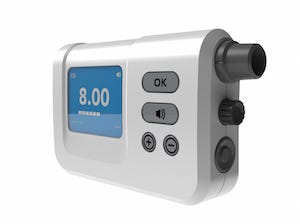While 3D printing has become a major topic of conversation in manufacturing, there are some studies that say the cost of printers is still too high, creating a barrier to entry. However, the global 3D printing powder market is estimated by research firm MircoMarket Monitor, to cross the $500 million mark by 2020, at a CAGR of 24.4%.
October 13, 2015
While 3D printing has become a major topic of conversation in manufacturing, there are some studies that say the cost of printers is still too high, creating a barrier to entry. However, the global 3D printing powder market is estimated by research firm MircoMarket Monitor, to cross the $500 million mark by 2020, at a CAGR of 24.4%. “The growing demand for powders in additive manufacturing has led to significant developments in the 3D printing powder market,” said MicroMarket Monitor in its new report, 3D Printing Powder Market by Type (Metal, Plastic, Ceramic), by End User (Aerospace & Defense, Automotive, Medical & Dental) by Region (North America, Asia-Pacific, Europe, and Rest of World).
 Powder-based printers are usually complex to manufacture and only accessible to a few large-scale industries, such as aerospace, defense, and automotive, which require increased precision. New developments in metal, plastics and ceramic-based powders have prompted increased innovations in the powder metallurgy industry.
Powder-based printers are usually complex to manufacture and only accessible to a few large-scale industries, such as aerospace, defense, and automotive, which require increased precision. New developments in metal, plastics and ceramic-based powders have prompted increased innovations in the powder metallurgy industry.
Covestro (Leverkusen, Germany), formerly Bayer MaterialScience, notes that additive manufacturing methods are well on the way to fundamentally changing production processes in several ways: By cutting mold costs, reducing development times and offering manufacturers considerable design freedom. Significant advances have already been made in rapid prototyping—the computer-aided, cost-effective production of models and prototypes.
Current developments are focusing on further design optimization, greater functionality and, first and foremost, expansion into industrial mass production, notes Covestro. However, other challenges exist, such as high production costs and the limited availability of materials. While the consulting firm Roland Berger forecasts a fall in process costs of up to 60% over the next five years, Covestro is driving forward the development of high-performance polymers for existing 3D printing processes. These include thermoplastic polyurethanes (TPU), raw materials for polyurethane (PU) coatings and adhesives, and polycarbonate.
“The development of appropriate materials, in particular, plays a key role in the continued expansion of additive production methods,” says Dr. Thomas Busgen, Senior Project Manager, 3D Printing Technology, at Covestro. “We aim to enable significantly more functions than in the past.”
Covestro said that its products offer benefits over standard materials. For example, in fused filament fabrication (FFF), a plastic filament is liquefied or heated to deposit lines and dots onto a surface, which then harden when cooled. By repeating this process numerous times, a three-dimensional solid object is created layer by layer.
Covestro projects a wide range of applications for PTU, especially since a large proportion of the current Desmopan portfolio is suitable for the FFF method. The characteristic melting and hardening behavior of TPU results in a permanent bond between applied layers while maintaining the abrasion resistance and elasticity of TPU.
Polycarbonate is also ideal for this method. Covestro’s initiatives in this area include working in partnership with Chinese filament manufacturer Polymaker, which has recently launched polycarbonate-based materials for the FFF method onto the market.
Selective laser sintering has been around for a number of years, as one of the earliest forms of rapid prototyping (aka additive manufacturing), and involves using a laser beam to sinter a plastic powder. Covestro developed the TPU material Desmosint for this purpose a few years ago. The product is processed by partner Lehmann & Voss & Co. into a powder suitable for laser sintering and is marketed under the name Luvosint. Georg Fuchte is a contract partner at Covestro for 3D printing applications using TPU.
The product offers a number of advantages over the materials used previously, claims Covestro, which are brittle, less elastic and form rough surfaces. The characteristic melting and hardening behavior of TPU results in comparatively isotropic material properties and good abrasion resistance and elasticity.
In binder jetting, a thin layer of powder consisting of plastic, ceramic or metal particles is spread across the surface. A liquid binding agent is then applied to the layer of powder from an inkjet print head at particular points, where it forms a bond. The next layer is applied and bonded to this, resulting ultimately in a three-dimensional structure that can subsequently be infiltrated for further hardening. Covestro offers various polyurethane products for the powder, infiltration and binding agent for this method. Covestro polyurethanes are also ideal for the rapid multi-jet fusion method. This involves using inkjet printing technology to apply a heat-absorbent ink onto a powder bed, which then cures using an infrared lamp.
Stereolithography has had a long history as the first rapid prototyping system available, and Covestro has developed UV-curing resins based on polyurethane raw materials specifically formulated for this process. A work piece is gradually lowered into a liquid bath. A UV laser initiates hardening of the polymer, which is used to create the layered structure. The materials currently available are not usually very temperature- and light-resistant, nor are they particularly elastic, giving Covestro opportunities for UV-curing resins. These UV-curing resins based on polyurethane raw materials from Covestro may offer advantages over materials currently in use, said Covestro.
About the Author(s)
You May Also Like




